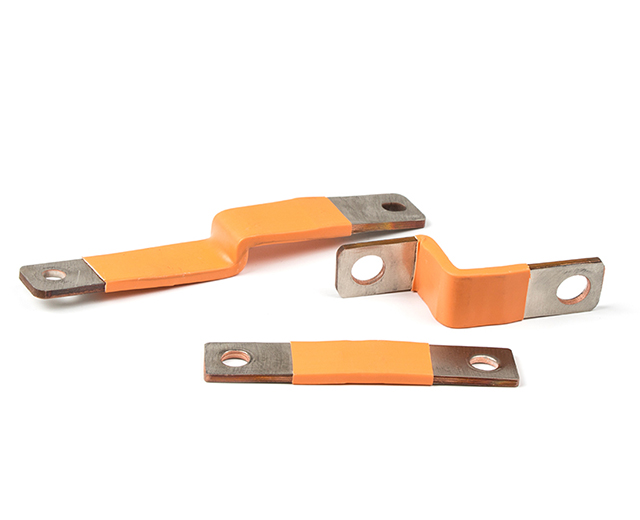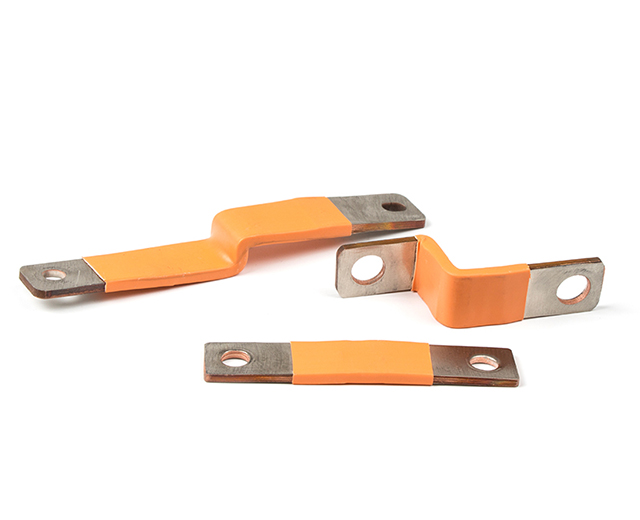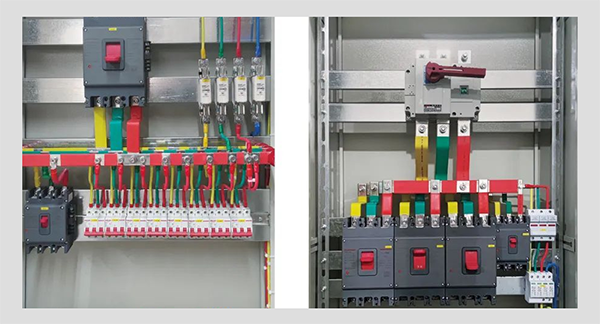

The EV Copper Busbar Connector is a critical component in the electrical systems of electric vehicles (EVs) and energy storage systems. It is primarily used to connect core components such as the battery pack, motor, inverter, and electronic control unit, ensuring the efficient and safe transmission and distribution of electrical power. Depending on the structure and application, Copper Busbar Connectors can be categorized into:
Depending on the structure and application, Copper Busbar Connectors can be categorized into:
Flexible Copper Busbar: Made from multiple layers of copper foil, this Flexible Copper Busbar offers excellent flexibility, making it suitable for installation in confined spaces or areas requiring bending.
Solid Copper Busbar Connector: This version is made from solid copper material, offering a rigid structure that can carry high currents, ideal for fixed installations.
Laminated Flexible Copper Busbar: Produced by diffusion welding multiple layers of copper foil, this Custom Copper Busbar Connector provides exceptional conductivity and mechanical strength, suitable for high current and high-density electrical systems.
Laminated Copper Busbar: With multiple copper sheets stacked together, this design optimizes current distribution, reduces inductance, and improves transmission efficiency, often used in high-power applications.
The Electric Vehicle Copper Busbar Connector is widely used across various industries, including:
Battery Management System (BMS) Busbars: These busbars connect individual cells in a battery pack, managing and monitoring battery performance for electric vehicles and energy storage systems.
Power Distribution Unit (PDU) Busbars: Energy Storage System Busbars distribute power to various sub-systems, ensuring stable and reliable power supply for electric vehicles.
High-Voltage Interconnect Busbars: These Copper Busbar Connectors connect high-voltage components, ensuring efficient power transmission in systems like inverters and charging stations.
Charging System Busbars: Connects the charging port to the battery pack, facilitating the quick and efficient transfer of energy to the vehicle’s battery.
Inverter and Motor Busbars: Used to transfer power to the motor, driving the vehicle’s movement and providing reliable performance.
Energy Storage System Busbars: Also used in renewable energy systems such as solar and wind energy to store and release electrical energy efficiently.

The EV Copper Busbar Connector offers the following technical benefits:
High Conductivity: Made from high-purity T2 copper, these Copper Busbar Connectors ensure efficient power transmission with minimal energy loss.
Superior Thermal Management: The optimized design offers excellent heat dissipation, preventing overheating and maintaining system stability.
Outstanding Mechanical Properties: These connectors can withstand vibration and shock, making them ideal for vehicle operation conditions.
High Insulation: Insulated with materials such as heat shrink tubing, PVC, or PE, these busbars ensure safe operation under high-voltage conditions.
Custom Solutions: Whether you need a Custom Copper Busbar Connector for your specific project or a flexible solution, our products can be tailored to meet your exact requirements for size, shape, and connection type.
Below are the main technical specifications for the EV Copper Busbar Connector:
| Parameter | Value |
|---|---|
| Material | High-purity T2 Copper |
| Conductivity | ≥ 58 MS/m |
| Current Carrying Capacity (A) | 200 A to 500 A |
| Operating Temperature Range | -40°C to +105°C |
| Surface Treatment | Tin or Nickel Plating |
| Insulation Material | PVC, PE, Heat Shrink Tubing |
| Custom Options | Yes |
The manufacturing process of the EV Copper Busbar Connector includes:
Material Selection: High-purity T2 copper or laminated copper foil is chosen to ensure optimal conductivity.
Shaping and Processing: Copper material is processed using stamping, bending, and other techniques to achieve the required shape and size.
Surface Treatment: Plating with tin or nickel enhances oxidation resistance and welding performance.
Insulation Protection: The connectors are insulated with materials such as heat shrink tubing, PVC, or PE for safe and efficient operation.
Quality Control: The final products undergo rigorous testing for conductivity, mechanical strength, and heat resistance, ensuring they meet or exceed industry standards.